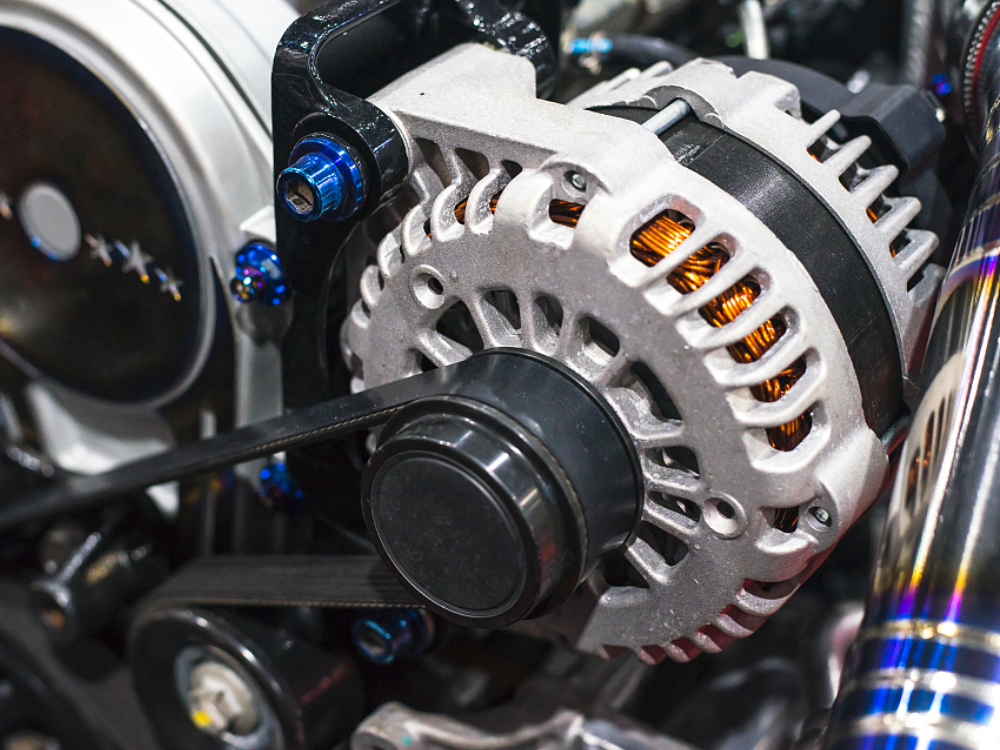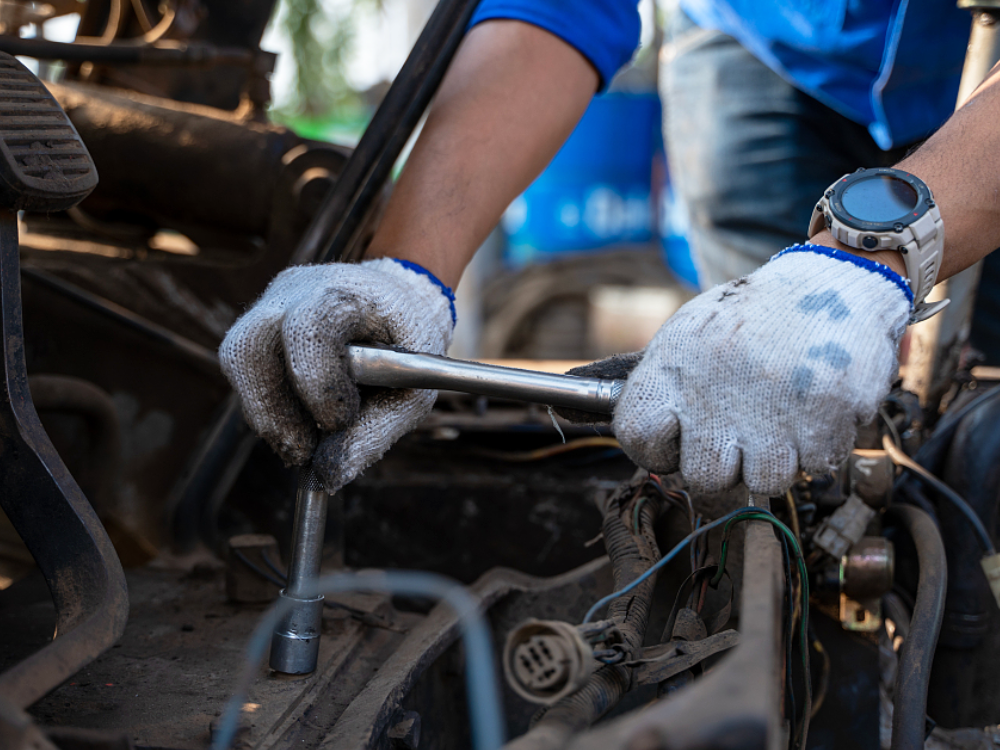
Have trouble starting your car? Dim headlights? Strange smells? It might be time for a new alternator!
What is an Alternator?
The alternator is an integral part of your car. Basically, it’s an electrical alternator for your car. It converts mechanical energy into electrical energy and keeps your car’s electricals up and running. It keeps the battery charged while the car is running. In turn, the battery runs all the electronics of your car. This includes things like headlights, air conditioners, windshield wipers, and more.
Where Can You Find this Alternator?
Under the hood of your car! It will be attached to the engine and will look like a small cylindrical motor. It consists of a lightweight metal casing, a pulley, a rotor, stator, a rectifier, brush holder and a fan to cool it down.
How Much Does It Cost an Alternator?
So, have you decided to go for a replacement? You might be worried about the cost. A new alternator, if needed, is a great investment for your car and in the long run, will be more reliable than repairing the part.
So yes, while a completely new alternator can be expensive, it might be the right choice for you and your car.
An alternator replacement can cost anything from $200 to $500+. Why the huge range? It’s because the cost of an alternator replacement depends on many different factors:
1. Make and Model:
The make and model of your car is one of the biggest factors affecting the cost of any of its parts. Obviously, high-end or imported cars will have a higher cost, and cheaper cars will have cheaper parts.
2. Brand of Alternator:
The brand of the alternator can significantly affect the cost. High-quality alternators are usually pricier than lower-quality alternatives.
3. New vs. Rebuilt Alternator:
A completely new alternator will cost more than choosing a rebuilt one. Rebuilt options are more budget-friendly and can be a suitable choice for some vehicles.
4. Alternator Parts:
Sometimes, additional parts such as belts or pulleys may also need replacement during the alternator repair. These additional components are going to contribute to the overall cost.
5. Labor Costs:
Labor is a big factor of the overall cost. The charges for a replacement can vary depending on your location, the repair shop, and the skill level of the mechanic. You can install the alternator yourself if you want to cut down on labor costs.
Signs of a Bad Alternator
This alternator is the main part of your car’s electrical system, so if it’s not working, it will make that known.
Here are some signs that you need to replace your alternator:
1. Dead Battery:
Sometimes, a dead battery can indicate that you need to replace your alternator since it’s responsible for charging it up.
2. Too Dim or Too Bright Headlights:
Another sign of a faulty actuator is your headlights. If your lights are flickering, or are way too bright or way too dim, that’s a warning sign.
3. Trouble Starting:
If you hear a clicking sound instead of the steady hum of your engine when you start your car, that’s a sign that your alternator is unable to charge your battery. A bad alternator can also cause frequent stalling while driving.
4. Smell of Burning Rubber or Wires:
The unpleasant odor of burnt rubber could indicate that your alternator’s drive belt is wearing out. This can happen over time since your alternator is so close to the engine.
The smell of burnt wiring can be caused by overworking the alternator, which results in frayed wires.
5.Growling or Whirring Noise:
Cars are generally pretty noisy, but here you’re looking for the particular growling or whirring sound. If you hear that, it probably means that either the alternator’s pulley has become misaligned or the bearings of the alternatorare damaged.
6. Slower System:
A bad alternator will result in a slower system overall. You might notice your windows closing and opening slower, or your sunroof being stuck. Maybe your radio goes out. Or your speedometer starts acting up. If you notice any of these signs, get your alternator checked.
7. Battery Warning Light:
If a battery warning light shows up on your dashboard, it’s not always just about the battery. As mentioned above, the alternator’s working affects your car battery. So if your car is showing you the battery warning light, it could be an issue with the alternator.
Common Causes of Alternator Failure
Knowing the reasons behind alternator damage will help you to prevent those issues in the future. While your driving habits may play a role, some of the biggest factors behind alternator failure are:
- Wear and tear after long-term use
- Exposure to water
- Overheating
- Worn-out bearings
- Leaking fluid
- Salt intrusion
- Using jumper cables incorrectly

Should I Replace or Repair My Alternator?
To repair or to replace? That is the question – Whether to replace or repair a car alternator depends on the extent of the damage, the overall condition of the part, and the cost of replacement parts and labor.
Here are a few factors that can help you decide:
1. Age and Mileage:
How long have you had your car? If it’s fairly new, repairing your alternator is the way to go. On the flip side, if you have a really old car, you might want to replace the part altogether.
2. Cost:
A replacement is almost always more expensive than repairing. However, you might want to consider the longevity of the alternator after you replace or repair it. A replacement will typically last you longer. In fact, a new alternator is expected to give you a decent mileage of 80,000 to 150,000 miles, so it might be worth the cost.
3. Future Maintenance:
If your alternator has been problematic in the past or is showing signs of wear, a replacement might be a better choice to avoid future breakdowns and maintenance costs.
4. Warranty:
A new alternator will have the added benefit of a manufacturer’s warranty, so that’s one more point for replacement.
5. Time:
Repairing an alternator is a quicker process as it doesn’t consist of removing the old alternator and fitting a completely new one in its place.
If you’re still on the fence about whether to replace or to repair, you can always consult a professional mechanic. Minor issues such as a damaged belt or a worn-out bearing can be fixed by simple repair. However, if there is significant damage to internal components, replacement will be necessary.
Can You Drive With A Bad Alternator?
Technically, yes. However, this should not be a long-term solution. Depending on the capacity and condition of your battery, a car battery can run for half an hour to an hour without an alternator. Now while your car can survive on just the battery, if your battery runs out, your car will stop and not start until the battery is replaced or recharged.
Just fix or replace your alternator as soon as you can.
Replacing Alternator – step by step
An alternator replacement can be very expensive, especially because of the labor. You can cut down on labor costs by installing a new one yourself. They’re fairly easy to install, especially if you’re good with tools.
Save yourself a couple hundred bucks and follow this simple step-by-step tutorial on how to replace your alternator:
1. Disconnect the Battery:
First and foremost, disconnect the battery. Disconnect the negative terminal first and then unplug the positive one.
2. Disconnect All Electrical Connections:
The next step is to disconnect all those wires from the alternator. It helps if you label them along the way.
3. Remove the Belt From the Pulley:
Now you need to move the tensioner pulley enough to be able to slip off the alternator belt from it. To do this, you need to secure the pulley using a fixing pen or any other suitable tool and just slide the belt off.
4. Remove Bolts:
Get rid of all the bolts and screws, and voila! Your alternator is free from the bracket. Make sure you’re keeping those bolts and screws close. You’ll need them to install the replacement.
5. Remove the Alternator:
Remove the old alternator. You’re halfway there now. The removal process will make the installation seem easy, since it’s just the reversal of what you just did.
6. Install the New Alternator:
Before installing the new piece, check the replacement to see if it’s identical to the old part and if it’s suitable for your car’s make and model. If it’s the right part, place it in the alternator bracket of your car. Fasten it in place with screws and bolts.
7. Reconnect All Electrical Connections:
Reconnect all the wires to the new and improved alternator. The battery should be connected to it in order to be recharged.
8. Reconnect the Battery:
Reconnect the battery to the wires.
9. Test Drive:
Before your test drive, recheck all your connections and screws to see if everything is fixed tightly. Finally, go for a short drive and look for any warning signs.
